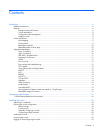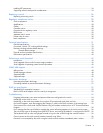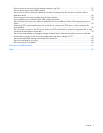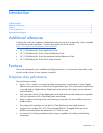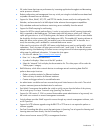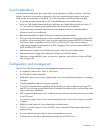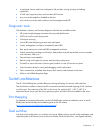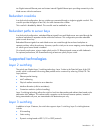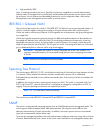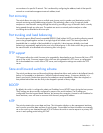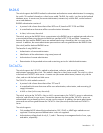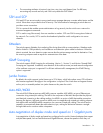Introduction 10
ten Gigabit external Ethernet ports and sixteen internal Gigabit Ethernet ports providing connectivity to the
blade servers within the enclosure.
Redundant crosslinks
In a dual switch configuration, the two switches are connected through a single ten gigabit crosslink. This
crosslink provides throughput of ten Gb/s for traffic between the switches.
This crosslink is disabled by default. This crosslink must be enabled for use.
Redundant paths to server bays
In a dual switch configuration, redundant Ethernet signals from each blade server are routed through the
enclosure backplane to separate switches within the enclosure. This configuration provides redundant
paths to each server bay.
Redundant Ethernet signals from each blade server are routed through the enclosure backplane to
separate switches within the enclosure. However, specific switch port to server mapping varies depending
on which type of server blade is installed.
On a heavily used system, using a single uplink port for 32 Ethernet signals causes a traffic bottleneck.
For optimum performance, HP recommends using at least one uplink port per switch.
Supported technologies
Layer 2 switching
The switch uses Gigabit Layer 2 switching technology. Layer 2 refers to the Data Link layer of the OSI
model, which is concerned with moving data packets across a network by enforcing CSMA/CD. This
layer performs:
• Ethernet packet framing
• MAC addressing
• Physical medium transmission error detection
• Medium allocation (collision avoidance)
• Contention resolution (collision handling)
Layer 2 switching technology allows the switch to look into data packets and redirect them based on the
destination MAC address. This reduces traffic congestion on the network because packets, instead of
being transmitted to all ports, are transmitted to the destination port only.
Layer 3 switching
In addition to Layer 2 features, the switch also supports Layer 3 switching. Layer 3 switching features
include:
• IP forwarding
• Static routing
• Dynamic routing based on RIP V1/V2 or OSPF protocols




